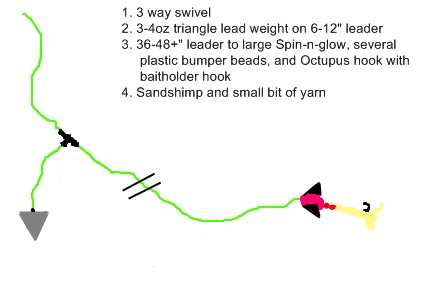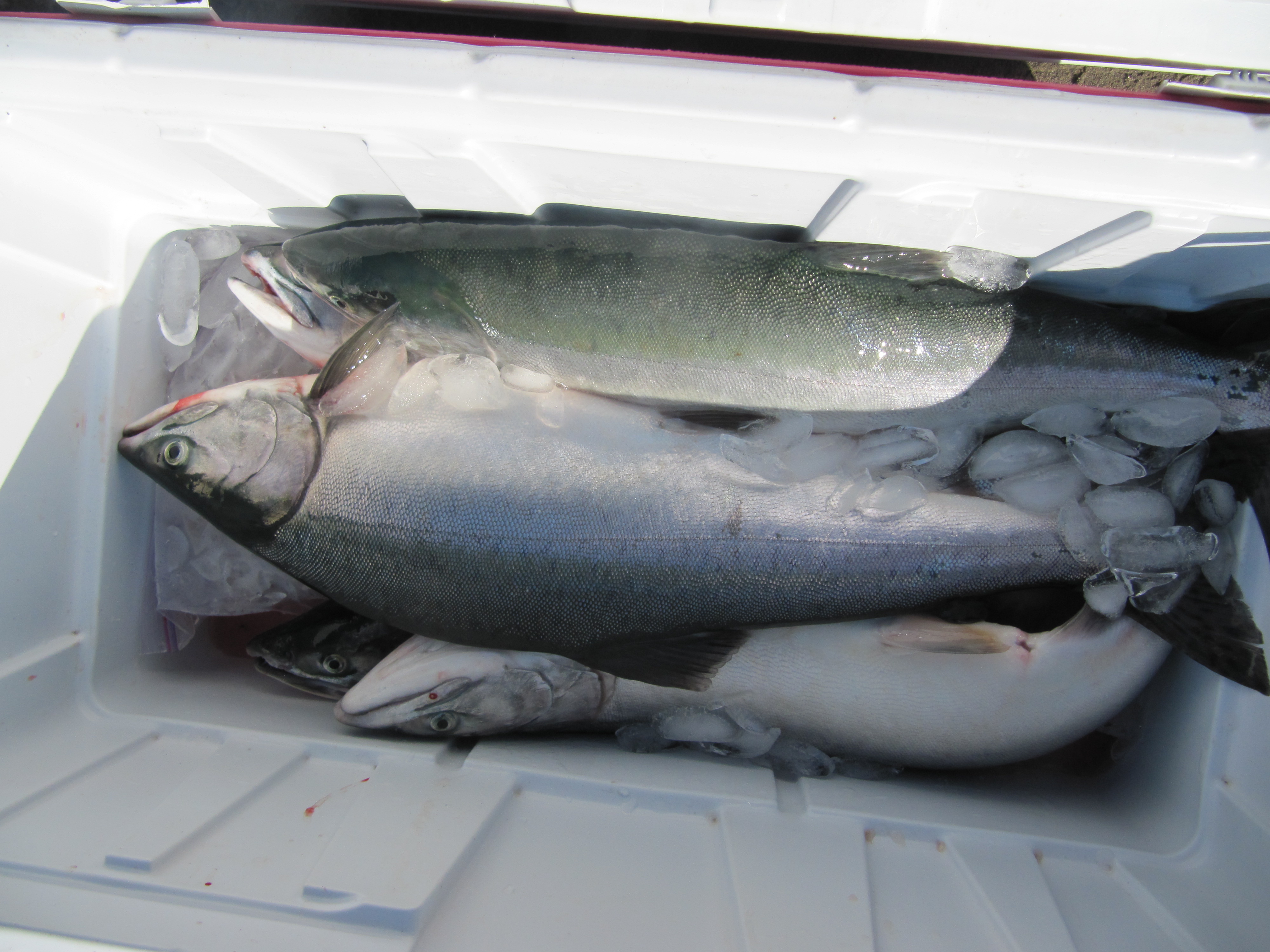Plunking, or fishing stationary bait on the bottom of a river, is a popular way to catch salmon on the Skagit and Nooksack river. This rig works particularly well for Skagit river pink salmon, as well as for other types of salmon elsewhere. When the humpies run thick in the Skagit river you’ll see lots of folks plunking with this sandshrimp rig from Young’s bar and other popular Pink Salmon fishing spots. The rig is pretty basic and allows the angler to cast out into the current, let the rig and bait sink to the bottom, put the rod in a rod holder and sit back and drink a beer, or whatever.
You will need:
- One 3 way clip swivel. Size medium
- One large spin-n-glow. Popular colors pink and firetiger.
- Several small plastic bumper beads.
- One 3-4oz triangle lead weight.
- One size 1/0-2/0 Octupus style hook tied with a baitholder knot. I prefer Gamakatsu hooks.
- A small bit of yarn.

Steps:
- Tie your 3 way swivel to your main line.
- Tie a 6-12” leader to the down part of the 3 way swivel and tie your triangle weight to the short leader.
- On a longer 26”-48”+ length leader tie in your Octupus hook using a baitholder knot, or buy them prettied at the store.
- Put 2-3 small plastic beads on your leader followed by the large Spin-n-glow. Popular colors for Humpies are anything pink. Firetiger works well too.
- Tie your leader to the remaining eye of the 3 way swivel.
You are then ready to rig your bait. If using eggs, simply put them in the baitholder loop and add a small bit of yarn to help the line from cutting through the bait when it tightens.
If using shrimp, here are the riggings steps.
How to rig a sandshrimp for plunking for salmon.
- Fold the tail over on the shrimp.
- Insert the point of the hook through the folded tail of the shrimp and thread the hook completely through the tail.
- Insert the point of the hook at the bottom of the breastplate, or ribcage, of the shrimp and in an upward movement put the hook through the breastplate.
- With the hook partially out of the shrimps body take the baitholder loop and loop it over the top of the shrimp. This will help hold it in place on the hook.
- insert a small amount of yarn inside the loop to keep the line from cutting the shrimp in half when the loop tightens.
Now you’re ready to fish. Just find a spot where you can cast into the current and cast your rig out. Let it sink to the bottom, then pick up the slack so you are in contact with the lure. Sit back and wait for the tip of your rod to start bouncing and set the hook!
- Bellingham Fishing Access
- Marine Area 7 (San Juan Islands) fishing access
- Skagit County lakes and rivers fishing access
- Whatcom County lakes and rivers fishing access
- Plunking for salmon – Sand shrimp / eggs technique
- Trout Fishing Techniques
- Bluegill Fishing Tips
- Making Your Child’s First Fishing Trip Truly Unforgettable
- 4 Accessories You Need For Your Next Fishing Trip

